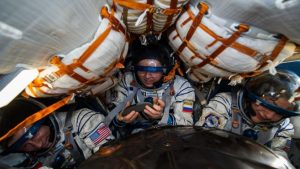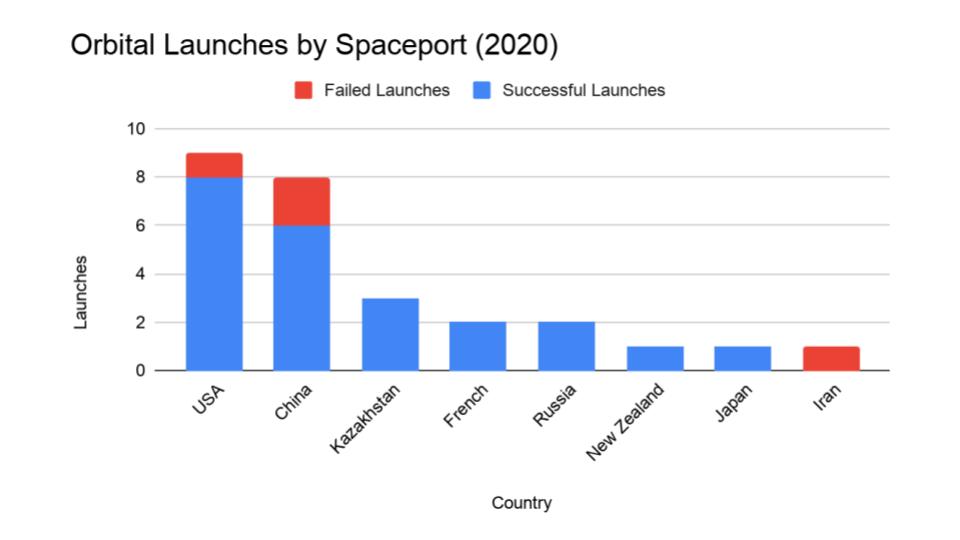
Roscosmos recovers Expedition 62 crew, Intelsat 901 gets a tuneup from MEV-1, and ISS captured a Starlink train above the southern lights
Links
Roscosmos returns astronauts to earth from ISS amid quarantine conditions
- Сарматы» на Земле (Roscosmos, in Russian)
- Expedition 62 Crew Returns to Earth From Space Station (NASA/Roscosmos on YouTube)
- Soyuz with crew of three lands safely in Kazakhstan (SpaceFlightNow)
- Full NASA video of extraction (Youtube)
Intelsat 901 has returned to service following the successful docking with the first Mission Extension Vehicle (MEV-1)
- Mission Extension Vehicle
- Intelsat 901 Satellite Returns to Service Using Northrop Grumman’s Mission Extension Vehicle (Northrop Grumman)
- Mission Extension Vehicle: Breathing Life Back Into In-Orbit Satellites (Northrop Grumman)
- In historic first, an aging satellite is resurrected by another in a technology that could reduce junk in space (Washington Post)
- MEV 1, 2 (Gunter’s Space Page)
ISS captured a Starlink train above the southern lights
- Starlink “train” photographed from the International Space Station (SatTrackCam)
- ISS062-E-148365 (Earth Science and Remote Sensing Unit, NASA Johnson Space Center)
Transcript
Hello, and welcome to the Daily Space for today Wednesday, April 22, 2020. I am your host Annie Wilson. Most Mondays through Fridays, our team will be here putting science in your brain.
Usually Wednesdays are for Rocket Roundup, and it’s been yet another week without launches.
Let’s get to it, shall we?

On April 17th at 5:16 AM UTC, Jessica Meir, Oleg Skripochka, and Andrew Morgan landed near Jezkazgan, Kazakhstan.

From there, they were literally pulled out of the capsule and placed in reclining chairs to help them adjust to the increased gravity on Earth. This is also a chance for flight surgeons and medical teams to take the returning spacefarer’s vitals — checking things like blood pressure, pulse and temperature.
The steppes of Kazakhstan are notorious for a complete lack of all things civilized other than rockets. There are no cell phone towers. So instead of a cell phone, crew members use an Intelsat satellite phone to call loved ones.

The seated astronauts and cosmonaut are then carried to their all terrain vehicles for the relatively short ride to the nearby waiting helicopters. Each crew member and their team is then loaded into individual helicopters for the two and a half hour flight to Baikonur. This is when they finally have a chance to change out of the bulky landing suits. Upon landing in Baikonur, American astronauts Meir and Morgan flew to Houston while Russian cosmonaut Skripochka flew to Moscow.
Speaking of Intelsat, they recently announced that IS-901 is once again fully operational thanks to a little help from MEV-1.
Regular listeners may recall that we talked about MEV-1 on Daily Space about a month ago when the satellites made contact on February 25th. Basically, MEV-1 is designed to attach itself to a satellite that is out of propellant and act as its motors to keep it in the correct orientation. This means that a satellite that has run out of propellant but is otherwise healthy can have its useful life extended for up to five years before moving the satellite out to a graveyard orbit.
IS-901 was declared operational on April 2nd, 2020. Date of announcement: Intelsat, Northrop Grumman Press releases: 17 APR 2020 – “Intelsat (NYSE: I) today announced that Intelsat 901 has returned to service following the successful docking with the first Mission Extension Vehicle (MEV-1) from Northrop Grumman Corporation (NYSE: NOC) and the company’s wholly-owned subsidiary, SpaceLogistics LLC, on February 25 – the first time that two commercial spacecraft docked in geostationary orbit.”
“Our partnership with Intelsat was critical to delivering this innovative satellite technology into operation,” said Tom Wilson, vice president, Northrop Grumman Space Systems and president, SpaceLogistics, LLC. “This historic event, highlighted by the first in-orbit rendezvous and docking of two commercial satellites and the subsequent repositioning of the two-spacecraft stack, demonstrates the business value that MEV offers to customers. Now that MEV-1 has successfully delivered on its mission to place the Intelsat 901 satellite back into operational service, we will continue to pioneer the future of on-orbit servicing through our multi-year technology road map leading to additional services such as inspection, assembly and repair.”

The mission didn’t quite go off without a hitch — there were several attempts before docking was successful. Contributing to the difficulty of the operation was the fact that at the time IS-901 was built, on orbit servicing was barely a hypothetical concept reserved for specially constructed systems like the Hubble Space Telescope. Servicing anything beyond low Earth orbit was considered extremely futuristic.
But patience and perseverance paid off, according to a statement by Jean-Luc Froeliger, Intelsat’s Vice President for space systems engineering and operations.
“It proves that in-orbit servicing is real. This was a project that took years in planning. We had identified [Intelsat 901] three years ago and decided it’s healthy but it’s going to run out of fuel in early 2020. And so rather than having to discard the satellite and retire it, we teamed up with Northrop Grumman to do this in-orbit servicing mission.”
Currently IS-901 is scheduled to remain in service for at least the next five years, after which the plan is to retire the commsat back into a graveyard orbit. That will allow the MEV-1 to perform the same 5 year mission on up to two other geostationary (GEO) spacecraft before its fuel & planned service life are expended. However, if there are no follow-on missions for MEV-1 at that time and if IS-901 is still healthy (meaning instruments on board are in good working order), Intelsat may choose to lease the extension vehicle’s services for up to ten more years.
Because of the success of MEV-1, Intelsat has made a few adjustments to its plans regarding MEV-2. Rather than moving IS 10-02 to a graveyard orbit before rendezvous, Intelsat has decided that IS 10-02 will remain in active service when MEV-2 docks with the aging satellite. MEV-2 has already finished construction and was originally scheduled to be launched sometime this year, but launch has been postponed due to delays related to the ongoing pandemic.

CREDIT: NASA/Dr Marco Langbroek
For our last story of the day: Starlink. Love it or hate it, Starlink is a thing. To the dismay of many astronomers and the delight of satellite spotters, the satellite trains can be spotted from many places here on Earth. And now, they can be seen from space.
On April 13th, a camera onboard the ISS captured a Starlink train above the southern lights. The train was first noticed by Twitter user Riccardo Rossi (@RikyUnreal). Huub Eggen (@phi48) contacted Dutch satellite tracker Dr Marco Langbroek, who then assigned probable identities to the objects. Dr Langbroek said that this train is from the Starlink 4 launch that occurred on February 17 of this year.

To wrap things up, here’s a running tally of a few spaceflight statistics for the current year:
- Toilets burned up: 2
- Total new satellites in orbit: 345 (includes those launched from other in-orbit craft, such as the ISS)
- Total satellites from launches: 331
I keep track of orbital launches by where they launched from. Here’s that breakdown:
Total 2020 successful launches: 23 (+ 4 failures so far)
- Total attempts by country:
- USA: 9
- China: 8
- Kazakhstan: 3
- French Guiana: 2
- Russia: 2
- New Zealand: 1
- Japan: 1
- Iran: 1
Your useless space fact for the week comes to us from Patrick Doyle, “Venus is the only planet in our solar system where the sun rises in the west and sets in the east.”
And that rounds out our show for today.
Thank you all for listening. Today’s script was written and edited by Dave Ballard, Gordon Dewis and myself. The Daily Space is produced by Susie Murph. Our fearless leader is Dr. Pamela Gay.
This has been a production of the Planetary Science Institute, a 501(c)(3) non profit dedicated to exploring our Solar System and beyond. We are here thanks to the generous contributions of people like you. Want to become a supporter of the show? Check us out at patreon.com/cosmoquestx


 We record most shows live, on Twitch. Follow us today to get alerts when we go live.
We record most shows live, on Twitch. Follow us today to get alerts when we go live.